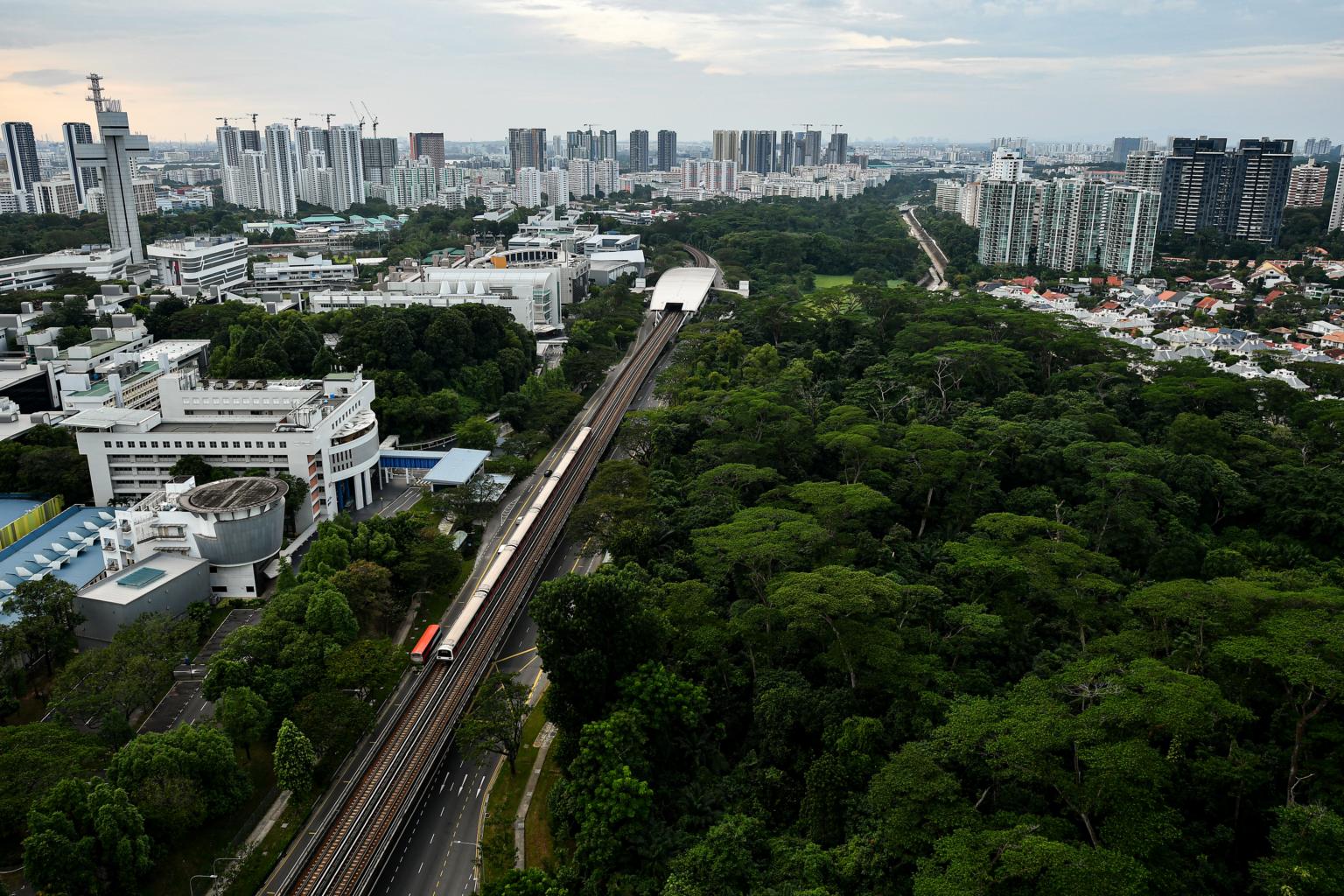Focus on quality and not just quantity of green spaces in making land use decisions: Conservation scientist
Sign up now: Get ST's newsletters delivered to your inbox

In recent months, there have been calls for the conservation of green plots such as the Clementi and Dover forests.
PHOTO: ST FILE
Follow topic:
SINGAPORE - Understanding the quality of nature areas in a city, and not just the amount of land covered by greenery, will help land-scarce Singapore make better land use decisions, conservation scientist Koh Lian Pin said on Tuesday (June 22).
Professor Koh, who was speaking at the World Cities Summit, made the point when he responded to a question about what Singapore could do in terms of incorporating nature into the urban environment.
"I can imagine as we move forward, the competition for the many different priorities of society will only get more intense," said the Nominated MP and director of the Centre for Nature-based Climate Solutions at the National University of Singapore.
He added: "At some point, we will have to triage our green spaces to prioritise the ones that we would like to keep and the ones that we might have to be using for other priorities."
In recent months, there have been calls for the conservation of green plots such as the Clementi and Dover forests, which have been zoned for housing.
National Development Minister Desmond Lee said in January that the Clementi site would remain zoned for residential use but that there was "no immediate need" to develop it for housing.
In February, Mr Lee said all feedback from a public consultation on the Dover site would be carefully considered by the authorities. The consultation, which was extended, closed in March.
On Tuesday, Prof Koh and other panellists said green spaces bring many potential benefits.
He highlighted how green spaces are a nature-based solution to climate change, due to their ability to contribute to carbon sequestration. This refers to the ability of trees to take in and store carbon dioxide, removing the heat-trapping gas from the environment.
He added that green spaces may also help with water purification, safeguarding of food security, and flood regulation.
Others said the conservation of forests and reforestation will help to preserve biodiversity.
Bukit Timah Nature Reserve, for instance, occupies 0.2 per cent of Singapore's land area but houses 55 per cent of native flora species and 84 per cent of the native amphibian species, said Dr Lena Chan, senior director of international biodiversity conservation at the National Parks Board (NParks).
She said it was important to consider the protection of various ecosystems and for policies to be guided by science, citing the preservation of Sungei Buloh Wetland Reserve, which in 2002 was gazetted as a nature reserve.
The reserve has extensive mangroves and is a stopover for migratory birds travelling from Russia, China, Japan and the Korean peninsula during winter.
Green spaces also have human societal benefits.
Dr Chan pointed to the popularity of parks during the Covid-19 pandemic. Many people needed space to de-stress after spending time cooped up at home, and their visits to parks were an indication of how green spaces helped.
Prof Koh said he hoped that information on the extent to which green spaces in Singapore provide these benefits will inform future decisions on land use.
Earlier this year, Mr Lee pointed to the Mandai Mangrove and Mudflat as an example of how a land use decision was made based on science.
The area had been intended for industrial use, but a decision was made to set it aside as a nature park, Mr Lee told The Straits Times. The nature park is slated to open next year.
An NParks study showed that the area is the main "seeding source" for other mangrove areas, and is also a stopover point for migratory birds.

